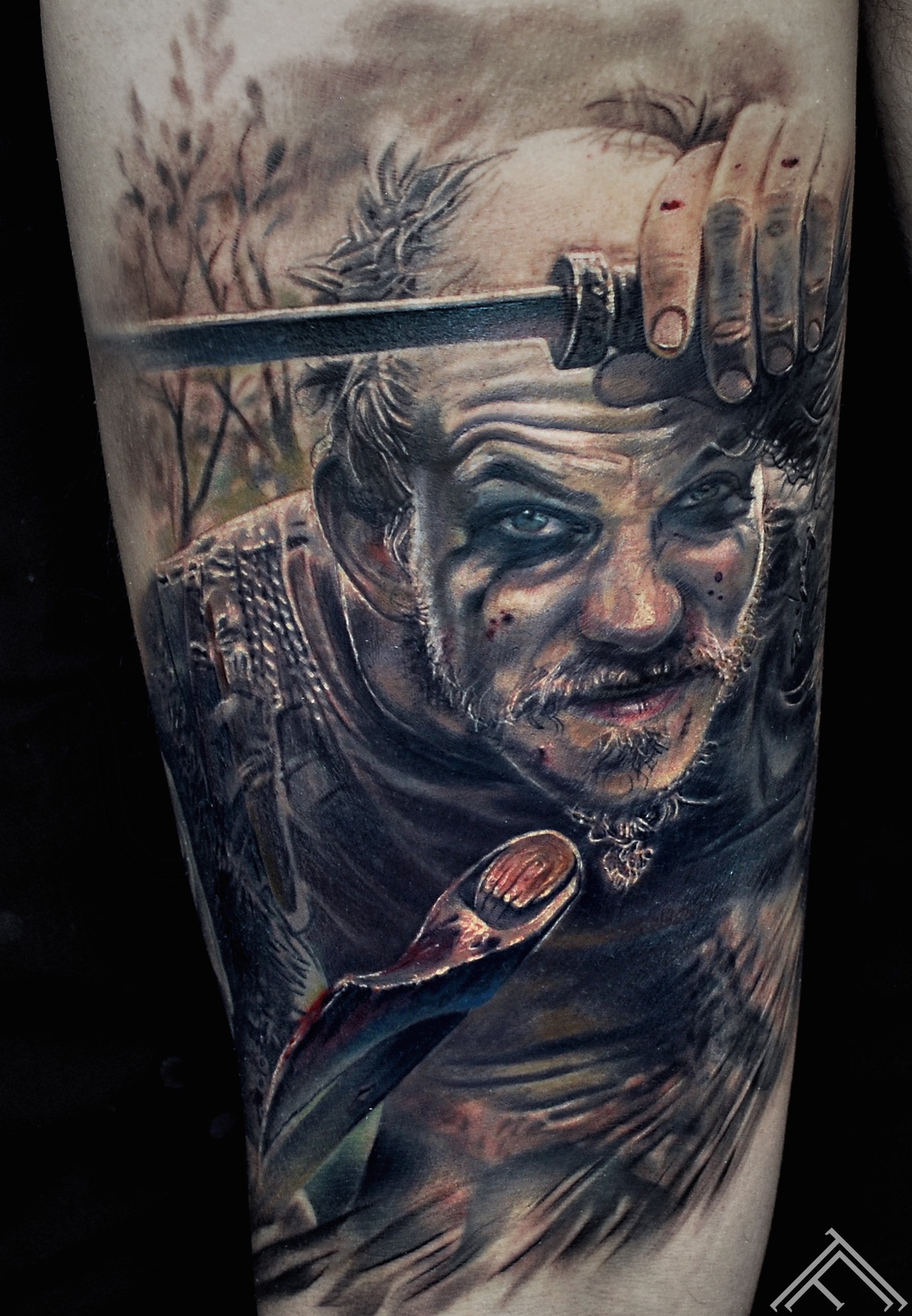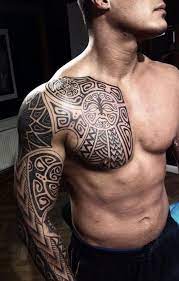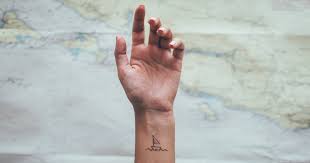
As a warrior culture, Vikings were likely to wear tattoos. They viewed tattoos as a badge of power, representing their effective fighting style, bold exploration of new lands, and remarkable trading skills. While archeological findings make it difficult to pinpoint Viking remains with tattoo-like markings, historical sources reveal that Vikings had tattoos similar to what can be seen today.
Symbols
Historical Viking tattoos often combined runic symbols with nature-inspired designs. These tattoos were an excellent way for Vikings to commemorate their heritage and keep the Viking spirit alive. Some popular designs included the Helm of Awe or Aegishjalmur, representing protection and scaring away enemies. The Aegishjalmur was versatile and could be inked on any body part, ranging from attention-grabbing designs to more subdued details. Triskelion tattoos were also popular among Vikings, symbolizing wisdom through a mixture of blood from Kvasir and honey.
Tattoos featuring Viking-related symbols like antlers were powerful reminders of growth and progress. Antlers were an integral part of Viking life journeys and made ideal choices for tattoo designs.
Wood Ash
Historical Viking tattoos were produced using wood ash, a natural dye popular during the Middle Ages. Ibn Fadlan, in his study of Viking culture, wrote about this practice, noting that every man in the Viking homeland had dark green or blue-black tree-like tattoos. The Yggdrasil tree, symbolizing life-giving strength and power, may have been a common design choice for Viking warriors.
Compass
The iconic compass was a popular design in Viking tattoo art. Bearers believed it possessed magical properties that enabled them to navigate the world safely. This design was an excellent choice for those seeking knowledge and protection.
Tupilaq
The Greenlandic Inuit religion created tupilaqs, avenging monsters from animal bones, skin, hair, antlers, and sinew. These monsters were given life through ritualistic spells and set loose in the ocean to track and destroy opponents. They featured prominent visual features such as threatening tongues, big nostrils suggesting aggression, ornamental lines on their faces representing forgotten tattoo traditions, visible ribs or spines, and composite nature comprising numerous animals/creatures.
This image may have been one of the distinctive patterns mentioned by Arabic travelers who visited Scandinavia during the Viking Age. However, “tattoo” was likely used to refer to mosque decorations rather than Viking tattooing practices.
Zoomorphic Themes
Zoomorphic designs featuring animals were standard in historical Viking tattoos. These tattoos reflected an animistic belief system where animals and objects held symbolic value. For example, a Viking bear tattoo could represent Odin, who often disguised himself as a bear when interacting with mortals. Another iconic symbol in Viking mythology was the grabbing beast, depicting an aggressive wolf that seized anything it desired. This beast symbolized hope and victory.

